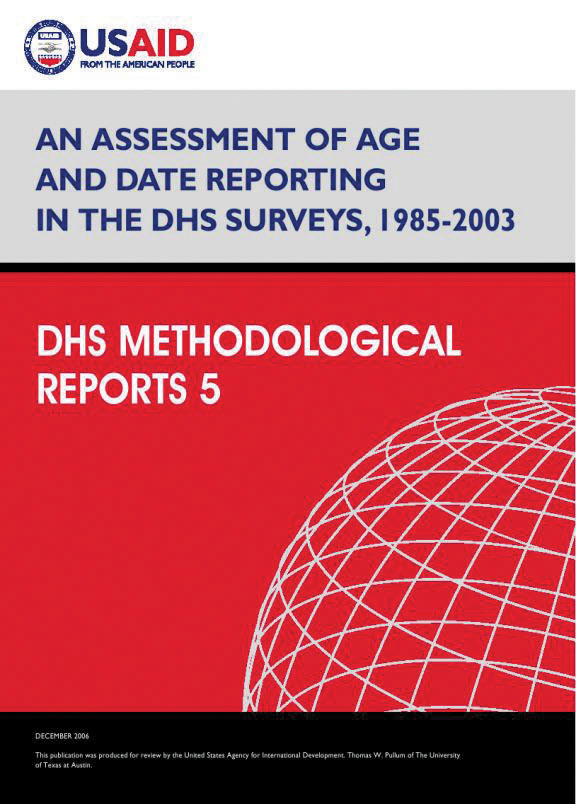- PUBLICATIONS
- JOURNAL ARTICLES
- ACCESS PUBLICATIONS
Publications Summary
- Document Type
- Methodological Reports
- Language
- English
- Recommended Citation
- Pullum, Thomas W. 2006. An Assessment of Age and Date Reporting in the DHS Surveys, 1985-2003. DHS Methodological Reports No. 5. Calverton, Maryland, USA: Macro International
- Download Citation
- RIS format / Text format / Endnote format
- Publication Date
- December 2006
- Publication ID
- MR5
Download
 An Assessment of Age and Date Reporting in the DHS Surveys 1985-2003 (PDF, 419K)
An Assessment of Age and Date Reporting in the DHS Surveys 1985-2003 (PDF, 419K)
